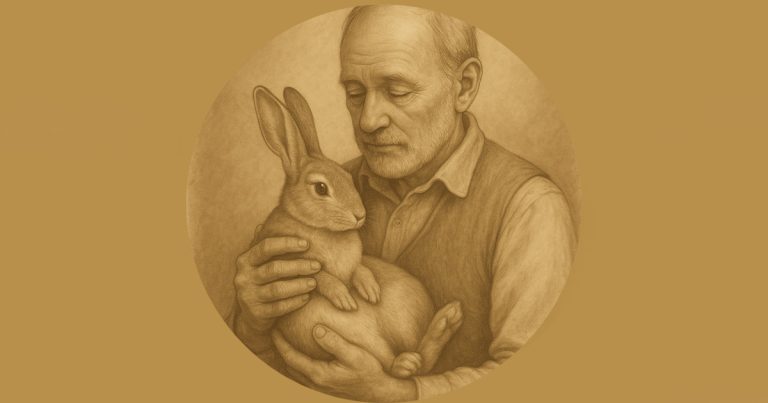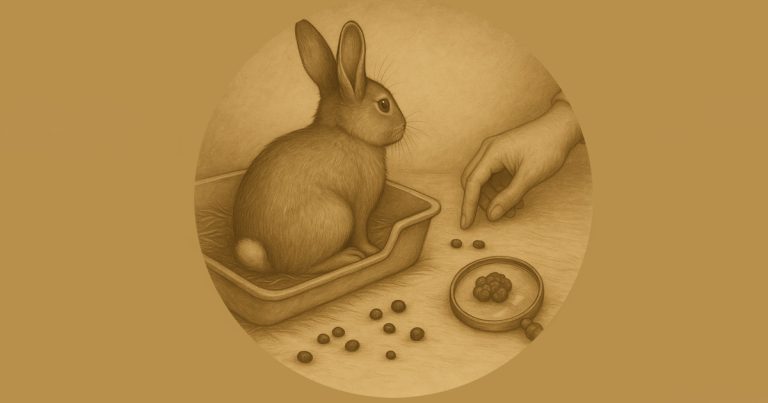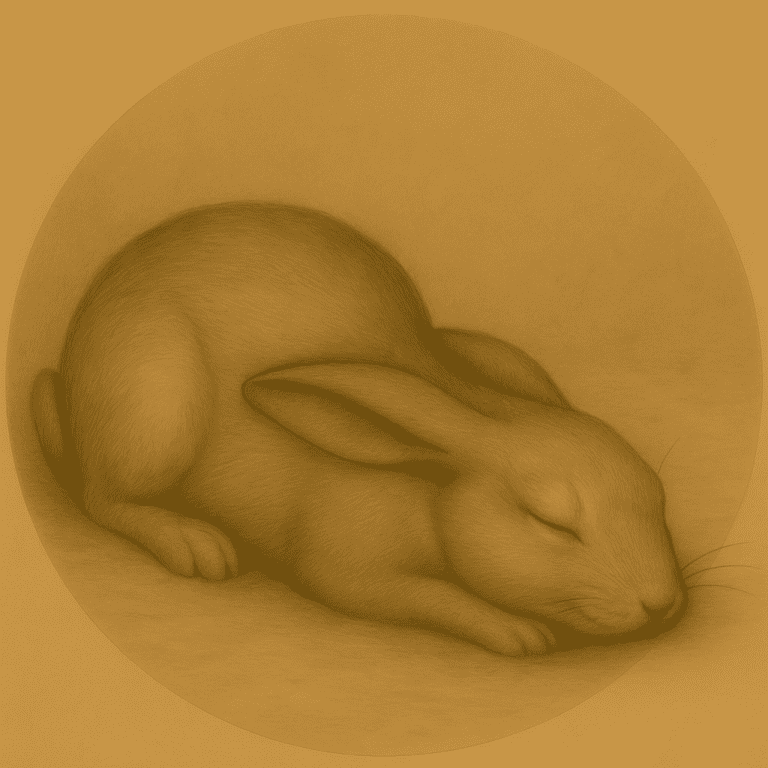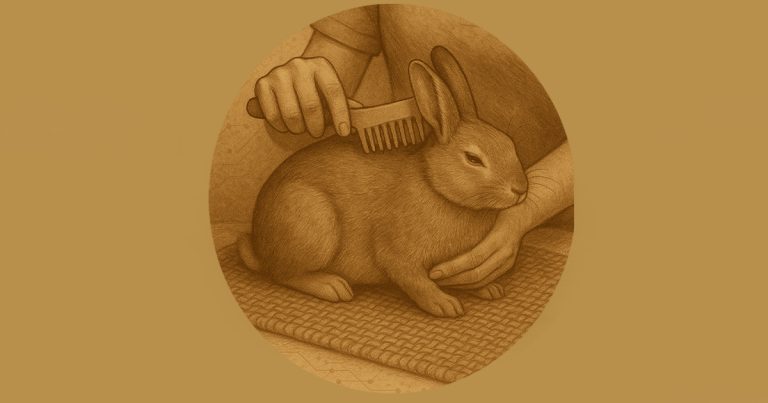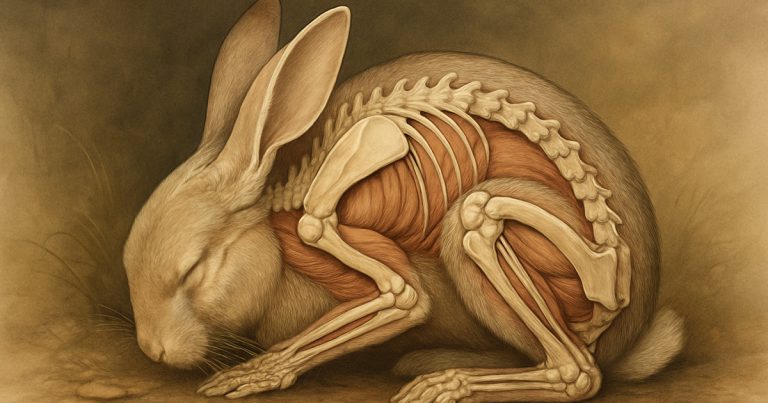Choking Rabbit
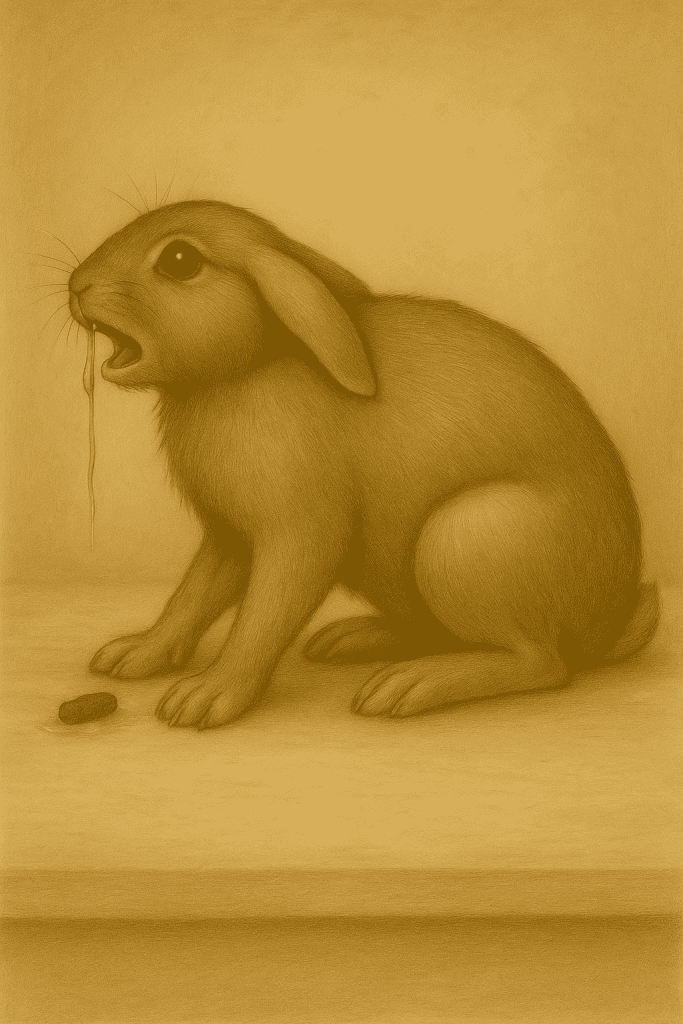
Introduction: Why We Never Walk Away at Feeding Time
Choking-Rabbit, We’ve lost count of how many rabbits we’ve saved from choking. It’s not luck. It’s not magic. It’s awareness and knowing what to do when seconds count.
There’s a reason we don’t just chuck pellets in a bowl and walk off. Because if a rabbit is going to choke, it usually happens within the first few mouthfuls. One too-big pellet. One overexcited gulp. That’s all it takes. You hear it before you see it a strange cough, a sudden stillness, a paw to the face. Then panic sets in — for them and for you.
But panic doesn’t save rabbits. Preparation does. Knowing what to look for. Knowing how to hold them. Knowing when to intervene, and when to let gravity do the work.
This guide walks you through every step from first signs to post-clearance care using drawn illustrations that show exactly what to do. No theories. Just what works, in real time, when your rabbit needs you most.
Because when it comes to choking, you won’t get a second chance.
1. Recognise the Emergency (choking-rabbit)
The moment you spot a rabbit starting to choke coughing, pawing at its face, panicking forget the usual niceties. Don’t fanny about trying to coax it. Grab it. Fast. This is an emergency.
It won’t usually run; it’s too focused on clearing the blockage. You’ll see saliva or mucus build around the mouth and nose, the eyes may bulge, and the body will tense as it instinctively tries to lift the head and cough it out. Often it’s a pellet, or part of one, that’s gone down the wrong way. If it can’t clear it on its own, it needs your help. Now.
2. Act Fast – Lift and Drop (choking-rabbit)
Pick the rabbit up exactly as shown one hand under the chest, the other on top to steady the head and neck. Move somewhere you’ve got space outside or to a clear area.
Lift the rabbit up high, then bring it down in a single, controlled motion. Not a throw. Not a slam. Just one firm downward pull, with a slight jiggle and a gentle squeeze at the end. Think firm, not frantic.
Do this up to three times.
Again don’t be afraid to act. The rabbit will usually not fight you. It’s too focused on choking. That panic you expect? It’s already in survival mode. Your hands are its best chance.
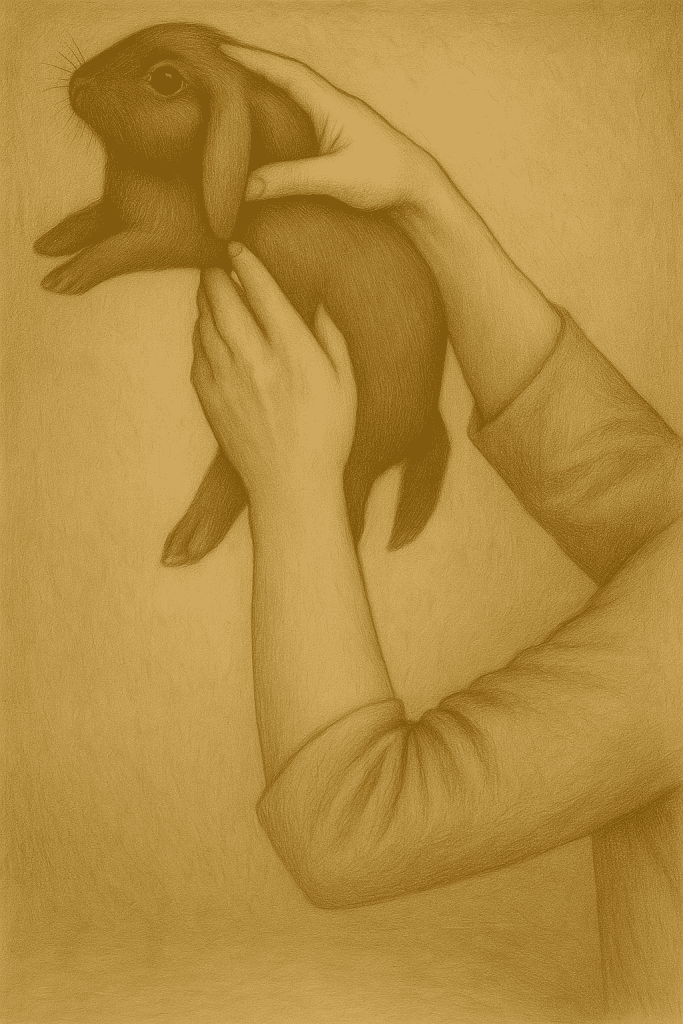
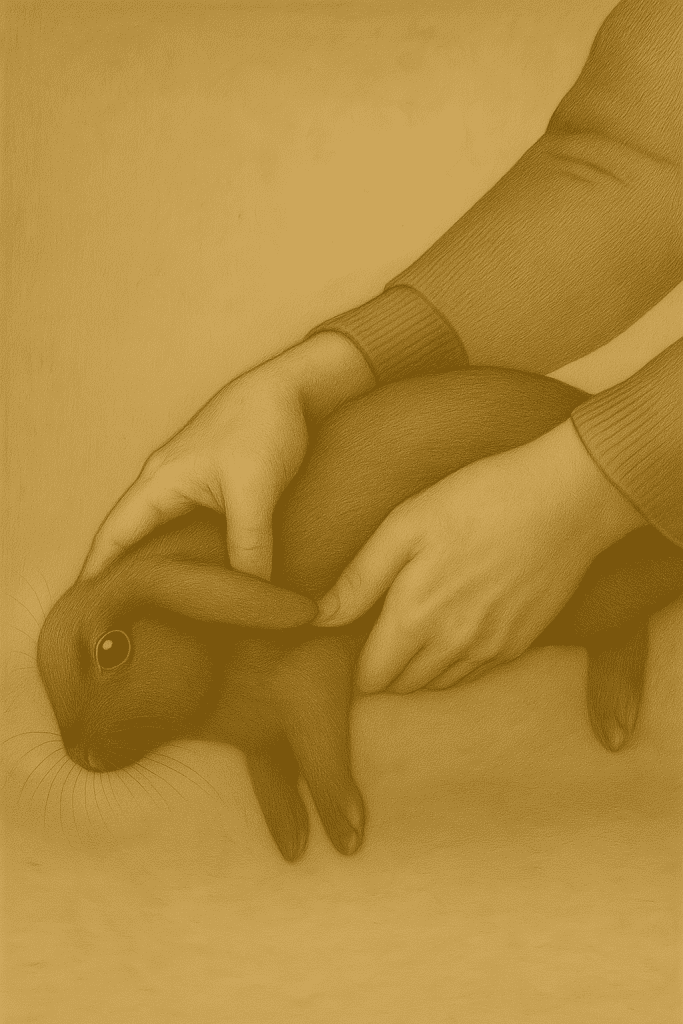

3. Observe – Watch the Eyes, Not Just the Mucus (choking-rabbit)
Once you’ve done the movement, place the rabbit gently back on the ground. You might not see a pellet come flying out. That’s normal. What matters is breathing.
Watch the chest. You may see it rising and falling. You might notice mucus bubbling from the nose or mouth that’s often a good sign. The rabbit may stop craning its head and sit still, looking a bit sorry for itself. If the panic has gone from its eyes, give it a minute to recover. It might sneeze, or wipe its face with its paws as it tries to clear the remaining mucus.
But, and this is critical, if it’s still not breathing properly, limp, or on the edge of collapse, do the manoeuvre again. This time with a bit more intent. Yes, you’ll be afraid of hurting it. But if you don’t dislodge that blockage, your rabbit will die. And you’ll know you waited too long.
Better bruised than buried.
4. Aftercare – What the Textbooks Don’t Say (choking-rabbit)
Textbooks will tell you to rush to the vet. But the hard truth? If you haven’t cleared the blockage, no vet is going to save that rabbit, it’ll be gone before you reach the car. What is worth doing is contacting your vet after the event, once the rabbit is breathing again but still struggling.
A proper post-choke check usually involves sedation to inspect the throat, assess for damage, and possibly prescribe pain relief or antibiotics. That part matters — especially if the rabbit’s still in discomfort hours later.
Once they’ve settled, make sure they’ve got water. If they usually drink from a bottle, switch to a bowl. Let them have a proper drink. Then look hard at the cause.
Was it the pellets? Too big? Too dusty? Something foreign in the mix? Or was it greed? If so, change how you feed. Offer dry forage, hay, herbs before pellets. That way, the urgency to gulp is gone. A rabbit will always go for its favourite food first. Take the pressure off.
The reason we’ve been able to capture this whole process is simple: we stay with our rabbits when we feed them. We wait. We watch. Sending the kids out to chuck a scoop of pellets at a rabbit on the way to school is a bad call. Feed them when you’ve got the time to notice.
Because that cough, it’s distinctive. And once you’ve heard it, you’ll never ignore it again. And you might just save a life.
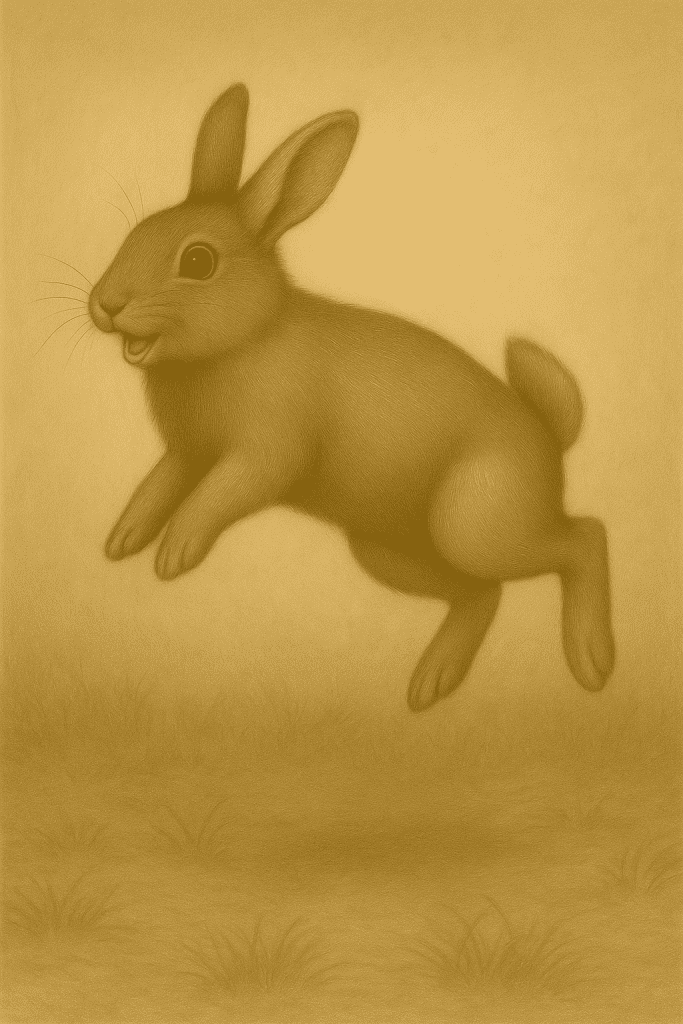
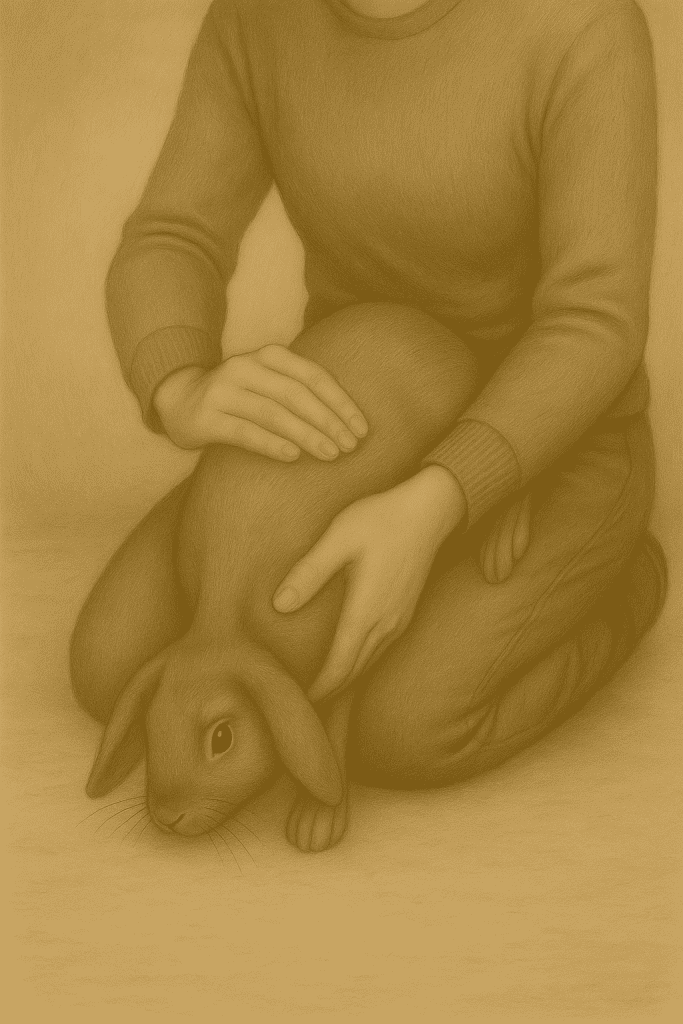
What to Do if a Giant Rabbit is Choking – The ‘Tilt and Clear’ Method
For larger rabbit breeds like Continentals or Flemish Giants, the standard lift-and-drop technique isn’t always possible. They’re simply too heavy to lift above waist height and safely control in an emergency. That’s where the tilt and clear method comes in, a safer, grounded approach you can perform quickly if your large rabbit starts to choke.
Here’s how to do it:
- Get down low. Kneel or squat behind your rabbit on a firm, non-slip surface. A towel or rubber mat can help stop sliding.
- Support the chest. With one hand, slide under the chest just behind the front legs. Your fingers should be firm but not squeezing, just enough to give full support without adding pressure.
- Elevate the back end. Use your knees or lap to gently raise your rabbit’s hindquarters while keeping the front paws and head angled towards the floor. This tilt helps gravity work with you to shift any trapped food or mucus down and out.
- Controlled motion. With your supporting hand still under the chest, use your other hand to give 3–4 firm but gentle downward bounces. Think of it as a controlled, cushioned dip not a shake. The aim is to create momentum to help dislodge the blockage, without causing panic or harm.
- Manual assist (if needed). If nothing shifts after the tilt, and your rabbit is still gasping or pawing, place one hand flat just beneath the rib cage (between chest and belly). Apply a short, upward rub firm but gentle like a Heimlich manoeuvre adapted for rabbit anatomy. Never jab or squeeze too hard.
This method has saved lives. It’s not a perfect science, and yes, you’ll be scared. But waiting or hesitating could cost your rabbit its life. Bigger breeds may need a slightly different angle, more stability, and firmer handling, but with calm, fast action, you can make the difference.
References
- Small Pet Select. (n.d.). Health Emergency: How to Help a Choking Rabbit. Retrieved from https://smallpetselect.com/health-emergency-how-to-help-a-choking-rabbit/
- House Rabbit Society (HRS). (n.d.). Choking in Rabbits: What to Look For. Retrieved from https://rabbit.org/choking-in-rabbits/
- Jenkins, J. R. (2006). Emergency care for rabbits. Veterinary Clinics of North America: Exotic Animal Practice, 9(2), 423–443.
- WabbitWiki. (n.d.). First Aid for Rabbits. Retrieved from https://wabbitwiki.com/wiki/First_aid_for_rabbits
- JustAnswer Vet. (n.d.). Rabbit choking on food – what to do? Retrieved from https://www.justanswer.com/veterinary/lbdsu-rabbit-seemingly-choked-food-sticky.html
- YouTube. (n.d.). Rabbit Heimlich Maneuver Demonstration. Retrieved from https://www.youtube.com/watch?v=guPudpOdGbM

